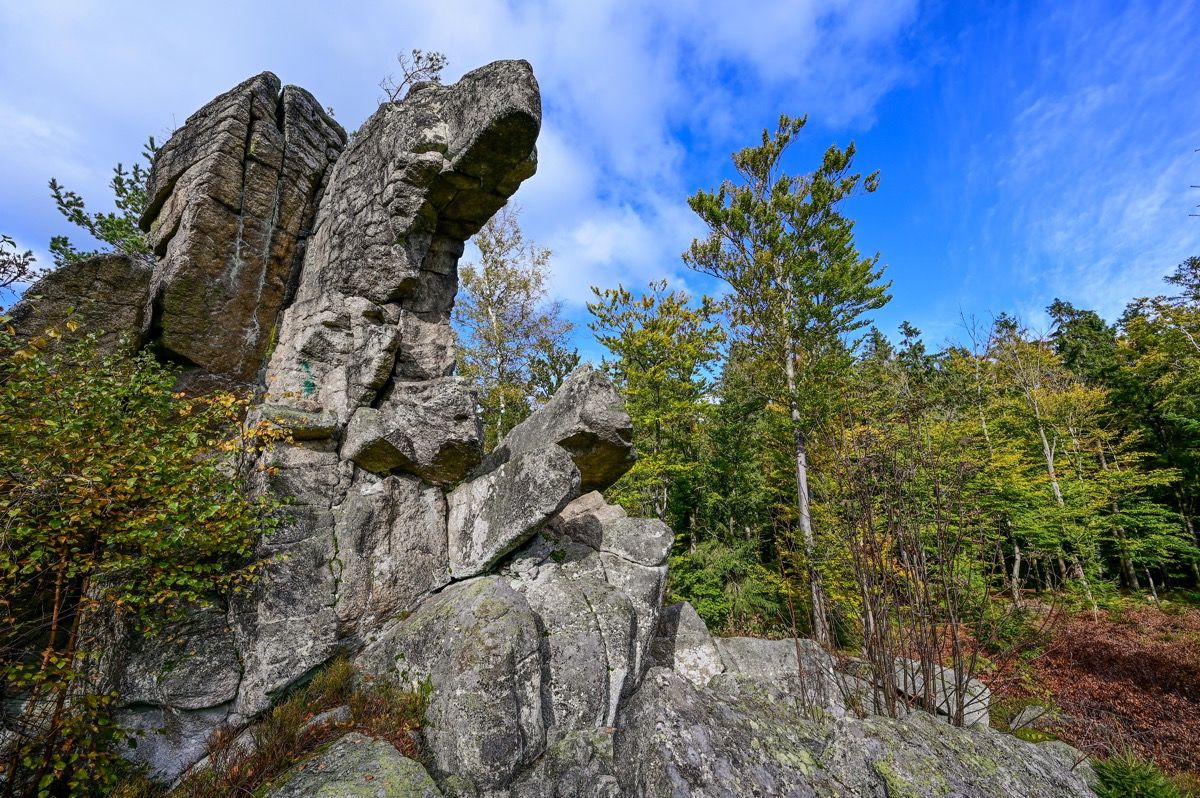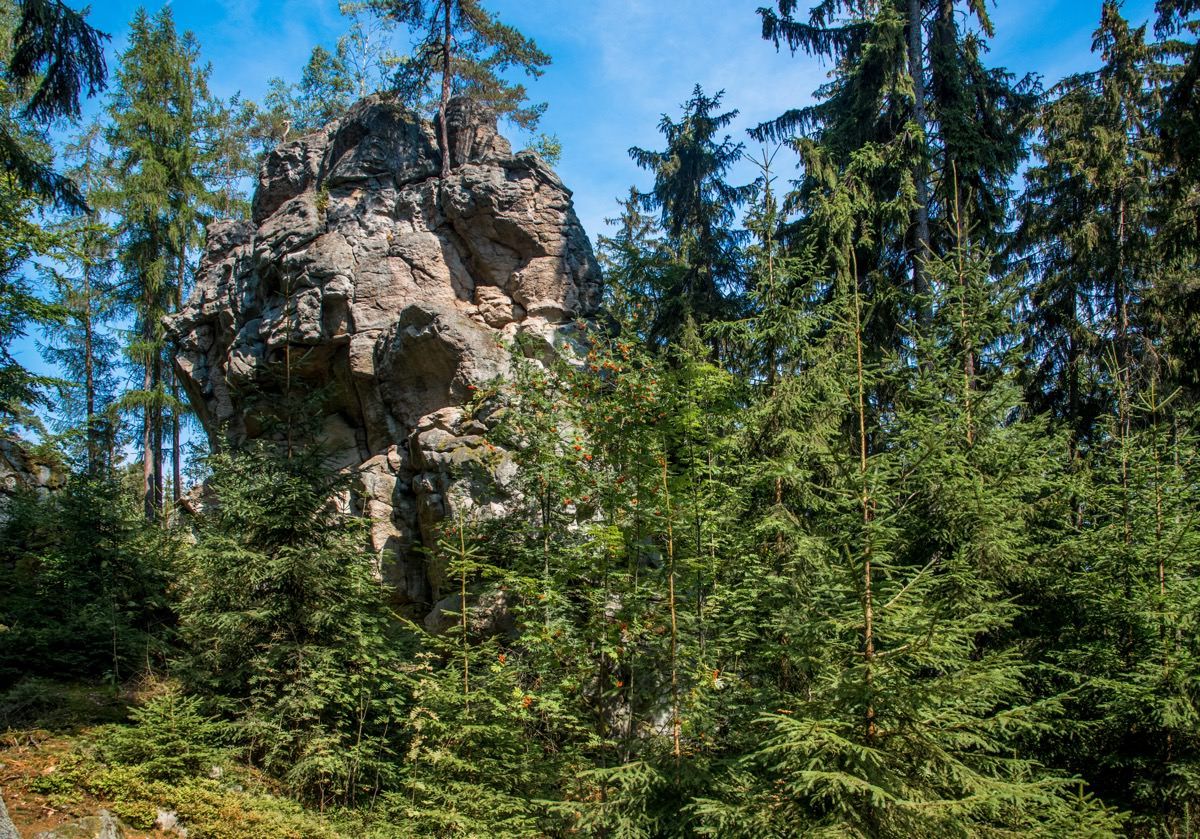
Steinwald - what name could more aptly describe the defining image of this mystical landscape? Because anyone who explores the almost entirely forested mountain range will repeatedly encounter striking boulders and bizarre stone giants. Over thousands of years, wind and weather have sculpted these imposing granite formations, such as the Devil's Stone, which rises from the open fields, or those with equally melodious names like the Robber's Rock or the Saubad Rock.
Nomen est omen
Steinwald - what name could more aptly describe the defining image of this mystical landscape? Because anyone who explores the almost entirely forested mountain range will repeatedly encounter striking boulders and bizarre stone giants. Over thousands of years, wind and weather have sculpted these imposing granite formations, such as the Devil's Stone, which rises from the open fields, or those with equally melodious names like the Robber's Rock or the Saubad Rock.
From the Platte, the 946 meter high main peak of the Steinwald, on which the Oberpfalz Tower is enthroned, hikers can enjoy an impressive panorama far beyond the Czech border. The same is true of the ruins of Weissenstein Castle, which are nestled in an imposing rock.
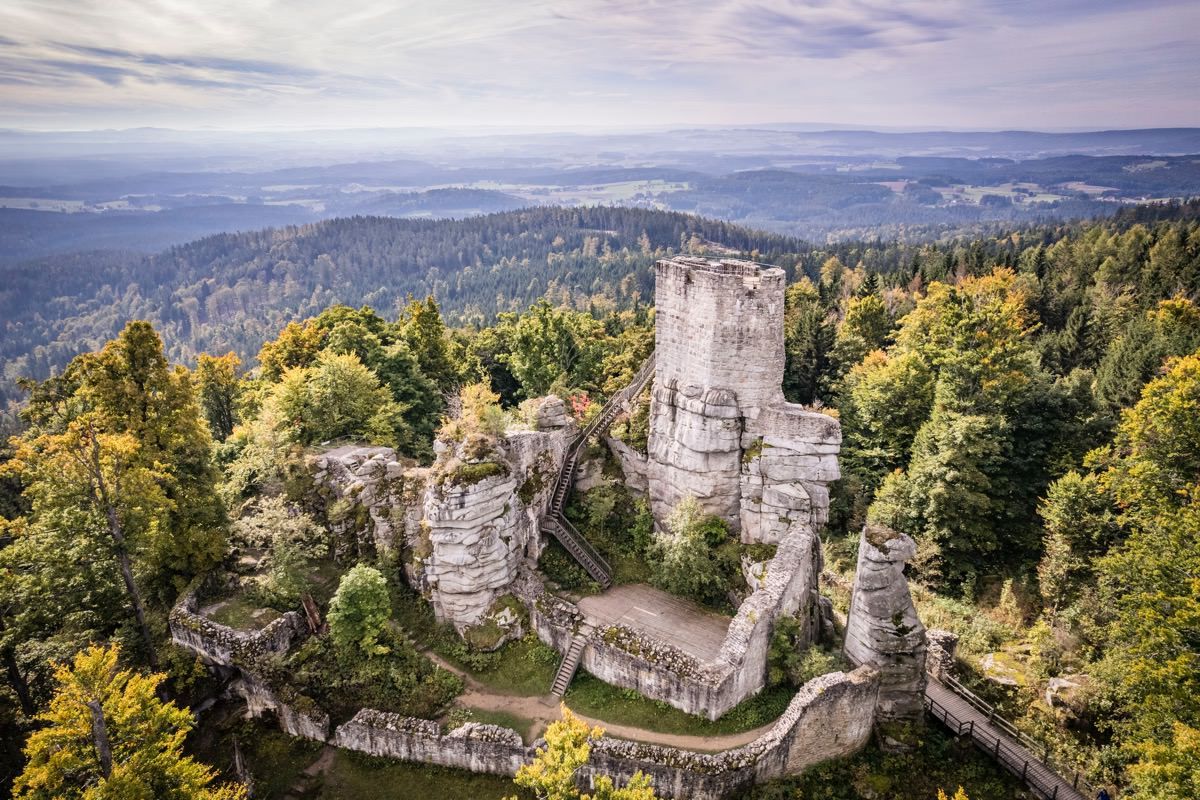
Mosaic of diverse habitats
Hardly any other nature park is home to such an abundance of rare plant and animal species on a comparatively small area as the Steinwald with its mere 23,000 hectares. The reason for this is on the one hand the sparse population, but also the different types of landscape and habitats in the region.
Although the forests are still predominantly covered with spruce, their stands are increasingly interspersed with pine and beech, sycamore, oak and fir as a result of forest conversion. What is striking everywhere is the rich herb layer with cranberry and blueberry, which is absent in most spruce cultures in this country.
Plants that depend on high humidity grow at the numerous shady, cool springs and streams. Exceptional species also find an ideal habitat along the wild and romantic Waldnaab, the eastern headwaters of the Naab, which meanders between Falkenberg and Windischeschenbach through a roughly 12-kilometer-long canyon with granite walls up to 50 meters high.
But it is not only forest and flowing water biotopes that are home to rare species in the Steinwald, but also at and in countless standing waters. It is no coincidence that the district of Tirschenreuth, where the nature park is located, is called the "Land of a Thousand Ponds". In total, there are even around 4,700 bodies of water, most of which are managed ponds in which mainly carp grow.
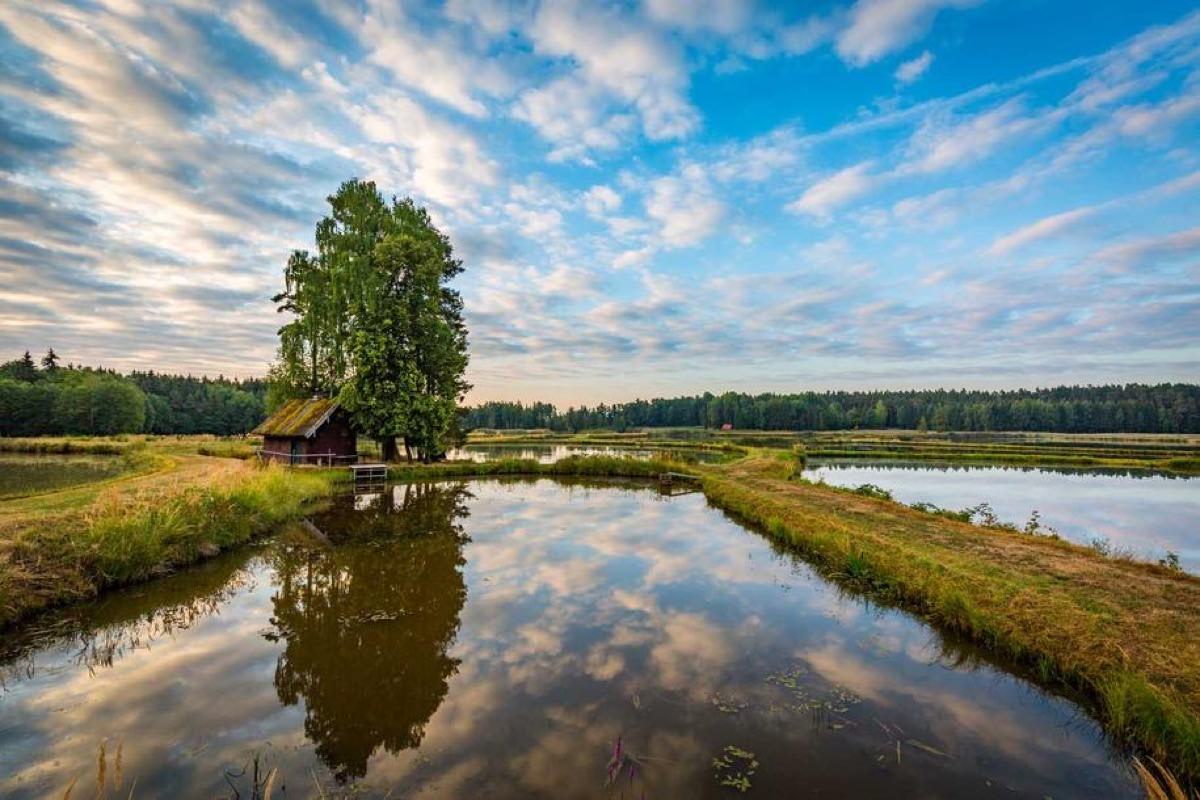
Several hiking trails and cycling routes, such as on the Vizinalbahn-Radweg or Karpfen-Radweg, lead through the water-rich region around Tirschenreuth, Wiesau, Kemnath and Mitterteich and bring the pond economy to life.
Exceptional biodiversity
In the Steinwald, botanically interested people get their money's worth. In clearings, on forest and path edges, you will find the Fuchs'sche Greiskraut as well as golden nettles, on the montane level, for example, the various-leaved creeping thistle. This stately plant bears red flowers and gets its name from its differently formed leaves, some of which are undivided and others pinnate. In shady, cool springs and streams with high humidity grow bitter foamwort, witchweed and counter-leaved spleenwort.
The forest and moor meadows in the nature park are particularly rich in flowers. In addition to well-known plants such as cuckoo campion or thyme, rare species such as arnica and wood louse grow there. Orchids such as the white wood hyacinth, the spotted orchid, the broad-leaved orchid and the male orchid, which grows up to 70 centimeters high, thrive in some meadows in the Steinwald. A bog meadow in the western Steinwald harbors beautiful stands of the ragged berry.
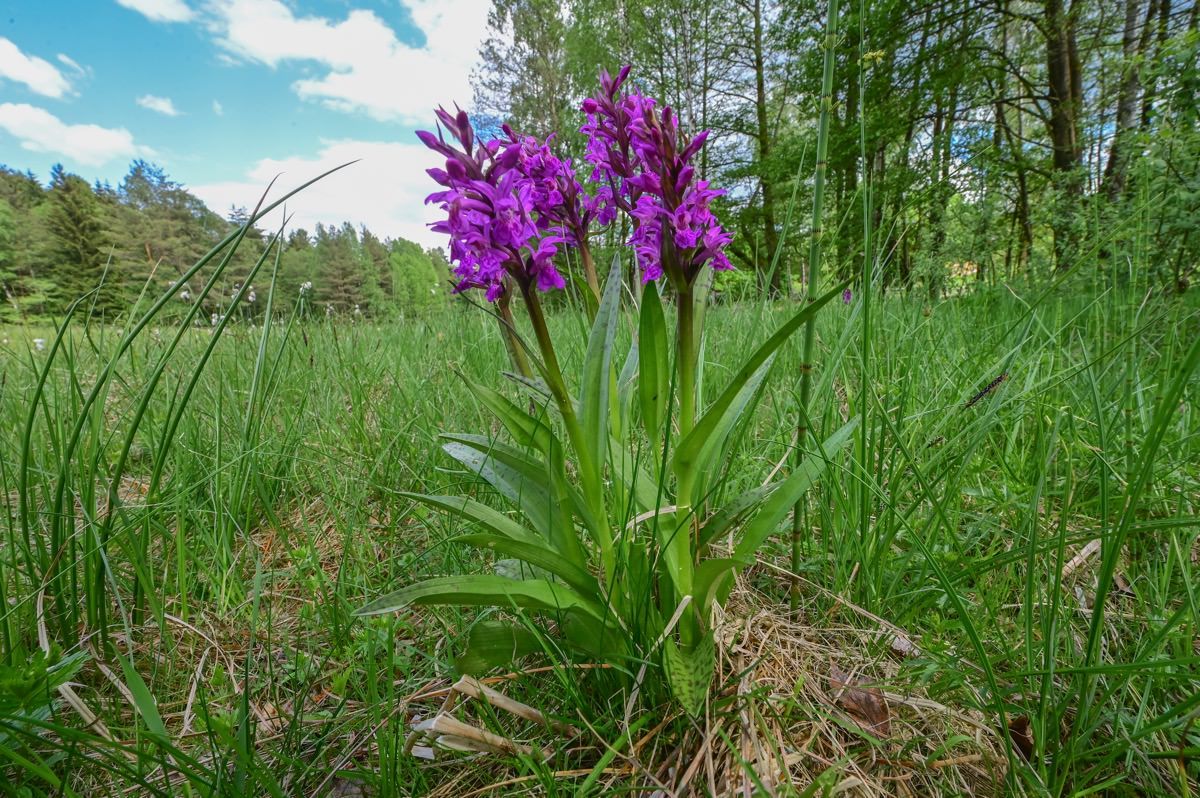
If you join a lichen hike, you will encounter the rare fox lichen, which owes its name to the fact that the vulpinic acid it contains, which gives it its yellow color, used to poison foxes in Sweden and in the Alpine region.
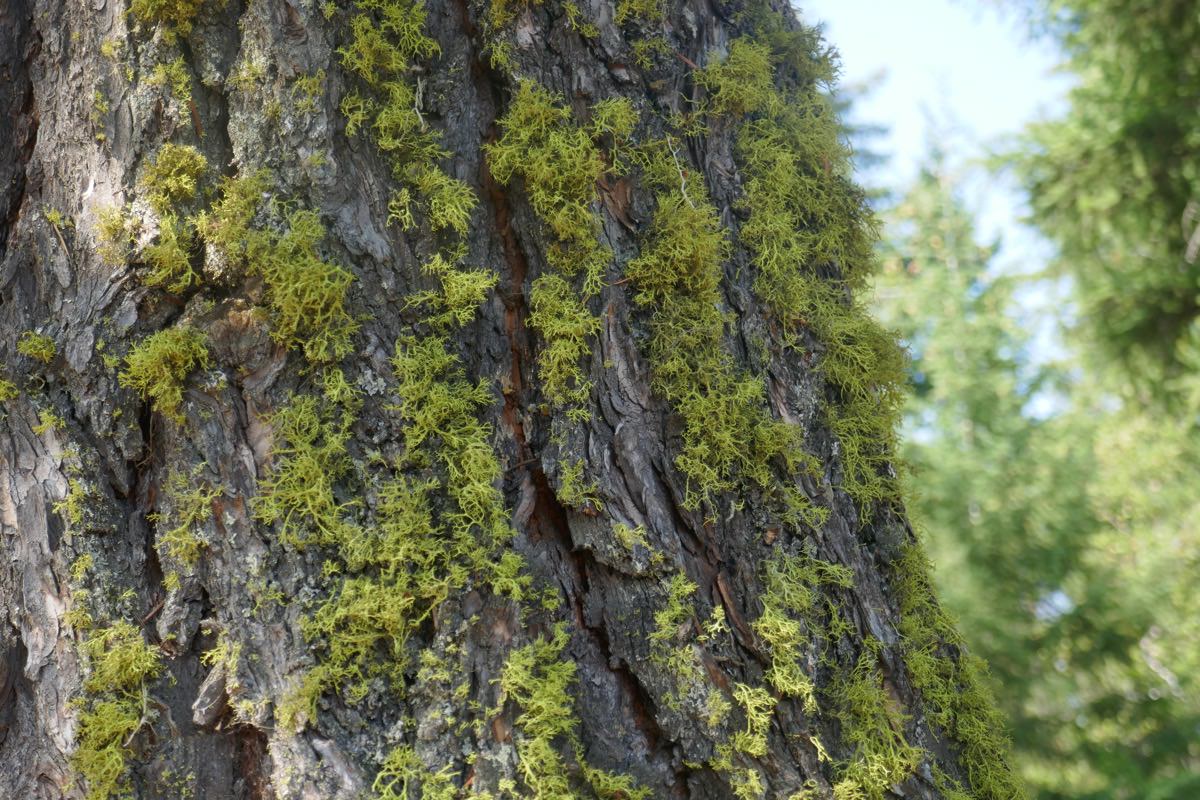
The wildlife of the nature park also has an impressive variety of species. In addition to typical forest dwellers such as roe deer and red deer, foxes and wild boar, the Steinwald is also home to many rare and shy species such as lynxes and black storks.
Rarities also include garden dormouse, moor frog, Great Grey Shrike and the coniferous scimitar-hawk. With a bit of luck and patience, birdwatchers can even see sea eagles and ospreys circling above the pond landscape.
Some species, such as the adder, the extremely rare river pearl mussel, the swallowtail butterfly, bats and the medicinal plant arnica, have their own protection measures dedicated to them.
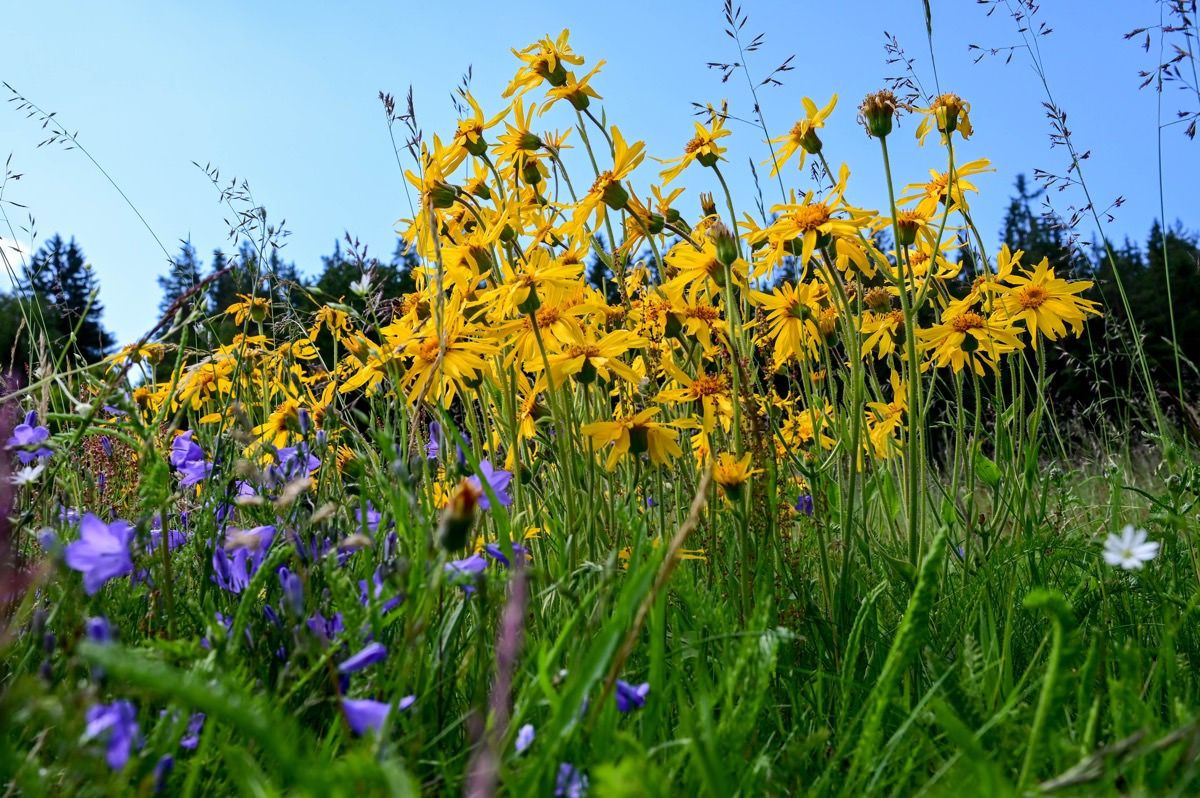
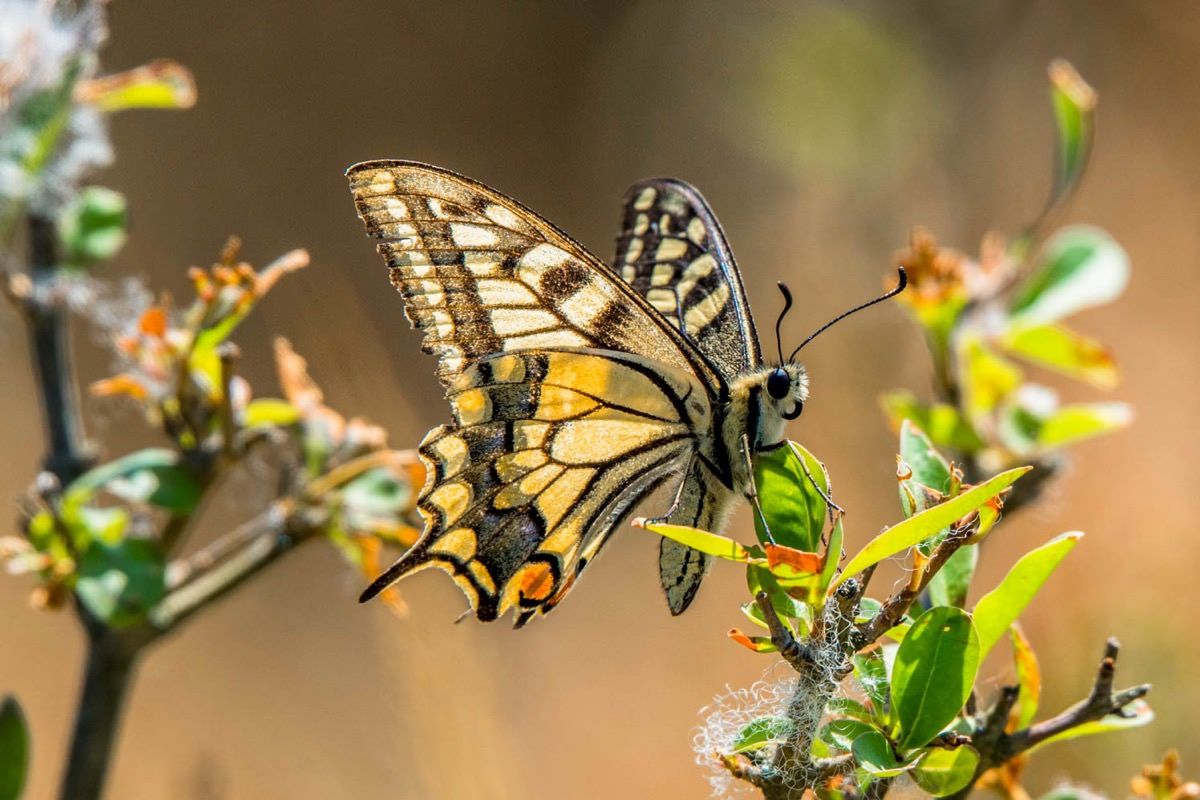
Probably the most spectacular project is the reintroduction of Europe's rarest owl, the Ural Owl. Under the leadership of the Association for Landscape Conservation, Species Protection and Biodiversity (VLAB e.V.) and together with several cooperation partners, the species conservationists are pursuing the goal of re-establishing a viable population 100 years after this fascinating bird became extinct in its westernmost range. In the long term, this is to spread into the forests of the northeastern Bavarian and northwestern Bohemian low mountain ranges and link up with the isolated population of the Bavarian-Bohemian Forest in the southeast.
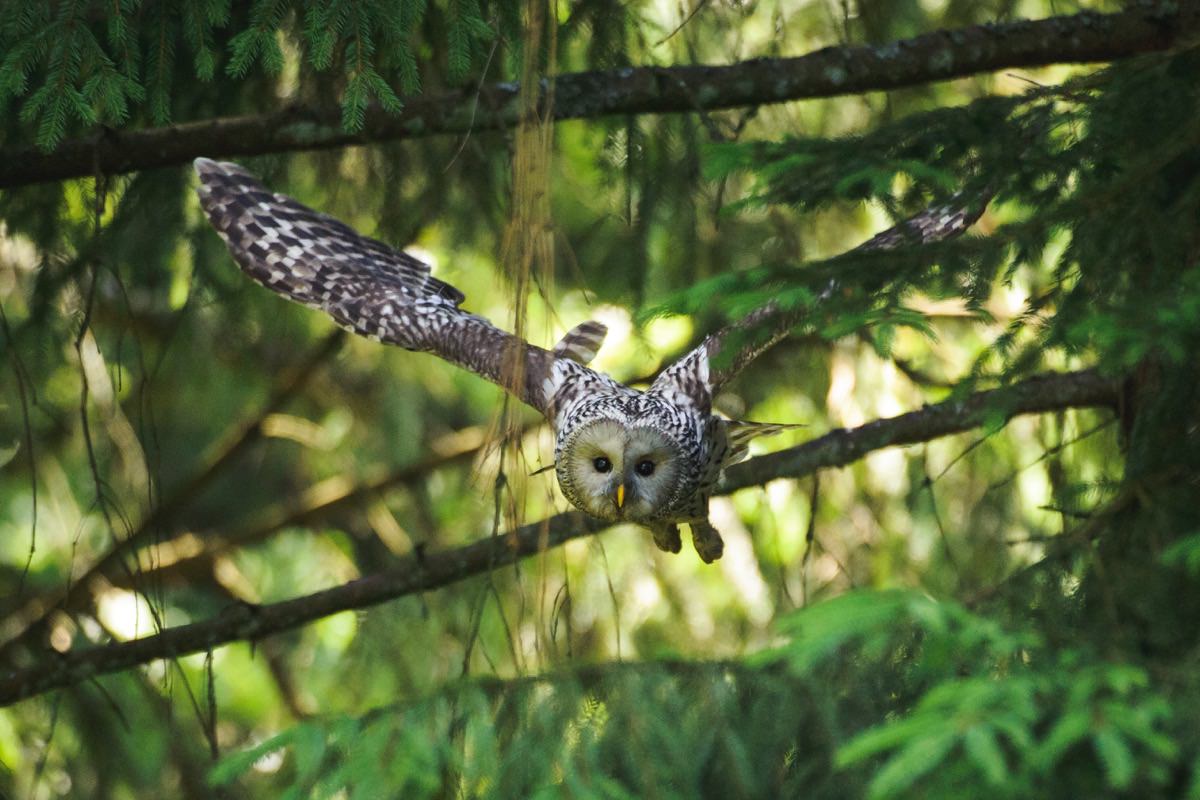
From 2017 to 2022, the project participants received a total of 60 young hawk owls from domestic and foreign zoos for reintroduction. These were acclimated in three forest aviaries for about four weeks and finally released into the wild at the age of about 100 to 120 days. So far, 200 nesting boxes have been installed within a radius of around 50 kilometers to supplement natural nesting opportunities - high stumps and strong dead wood.
Experience nature in the Steinwald
Visitors can learn interesting facts about the region at the four information points at the Fuchsmühl market house, the border mill, the Pullenreuth glass grinder and the forest house. And if you feel like combining education and exercise, you can take the Forest Experience Trail or the Forest History Trail. A special attraction bears the name "Ewilpa", which stands for "Edible Wild Plant Park" around the market town of Waldeck near Kemnath. Exemplary for environmental education with all senses.
The Steinwald Alliance eco-model region
17 member municipalities have joined forces to form the Steinwald Alliance in order to improve regional value creation in this structurally weak region in a coordinated manner. Originally, the alliance was founded for the construction of the Steinwald Cycle Route and joint tourism marketing. Since 2014, the funding status as one of 26 Bavarian eco-model regions, awarded by the Bavarian State Ministry of Food, Agriculture and Forestry, has also contributed to this in order to increase the proportion of ecologically farmed areas. Over the last few years, the Steinwald Alliance has steadily expanded its sustainability awareness program and created many offerings to inform interested consumers about organic agriculture and organic products on site in a fun and experiential way. The program for young and old, locals and tourists is colorful and diverse. These include organized bike tours through the organic region, organic cooking and baking classes, walks for elementary school children, as well as projects to promote biodiversity and farm tours at organic farmers. The joint organic beef marketing by the Steinwald Organic Cattle Producers' Association is also a project of the first hour in the model region.
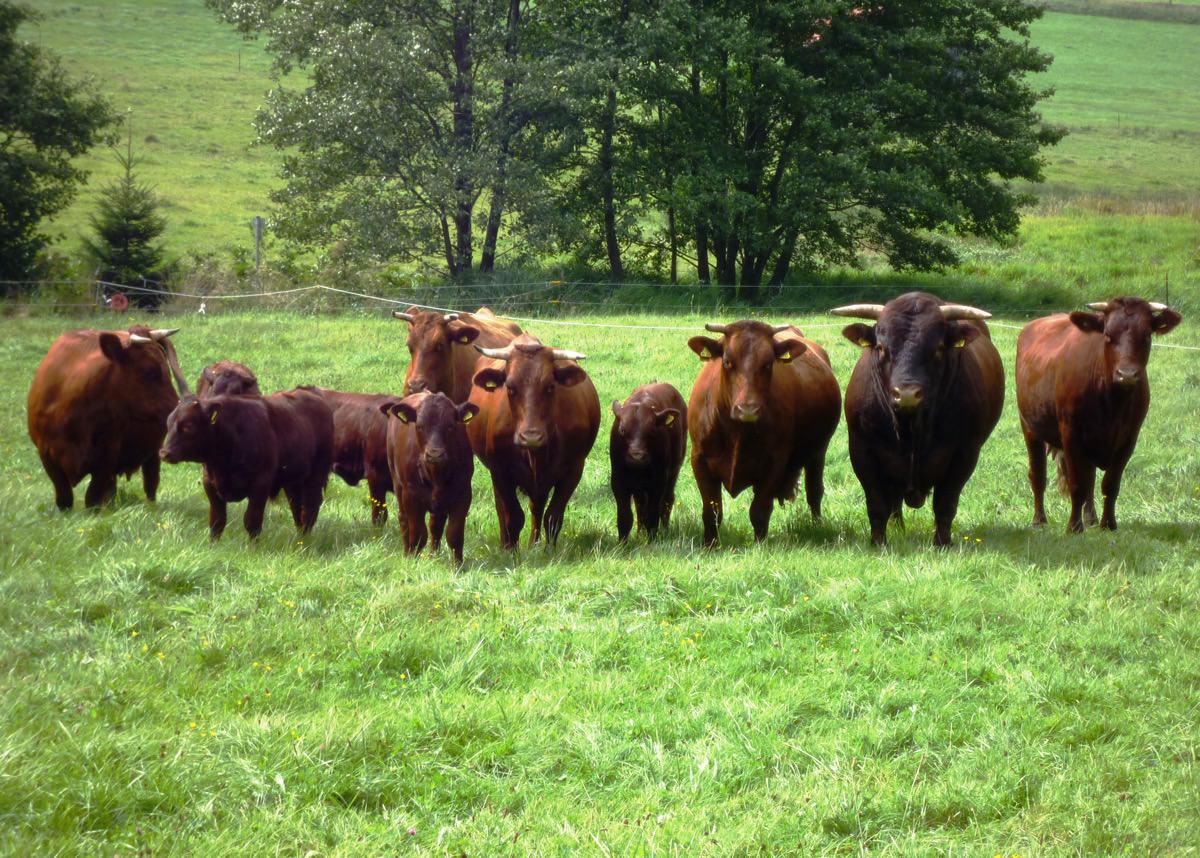
Experience geology at the "Volcano Experience Parkstein
Especially for those interested in geology, the Upper Palatinate offers numerous highlights. Especially in the south and east, the Steinwald is surrounded by a basalt dome landscape, from which partly bizarre rock formations protrude. Basalt is considered a primary rock of the earth, it is of volcanic origin and has existed for many millions of years.
A worthwhile destination not only for professional and amateur geologists, but also for interested laymen, is the village of Parkstein, located south of the Steinwald, with its imposing basalt cone, visible from afar.
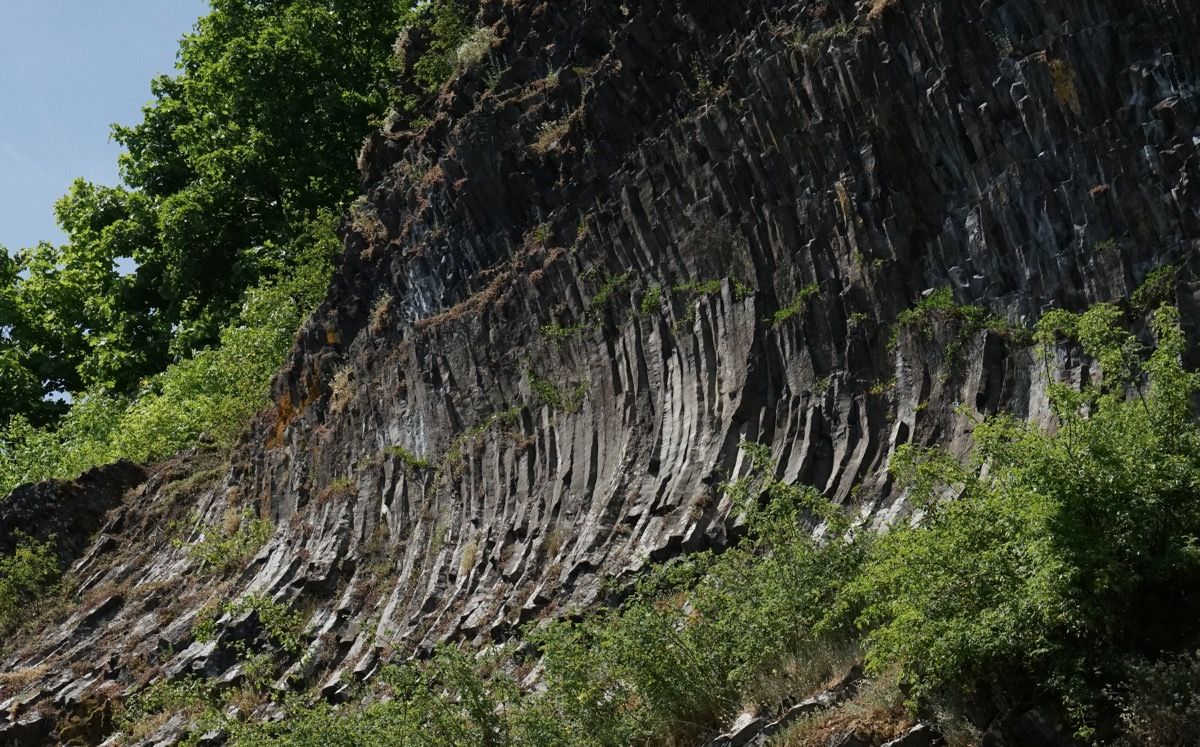
Those who join a recommended guided tour by a geo-ranger can even get inside the volcano via a rock cellar that was painstakingly dug in earlier times and used as a storage room for beer and food. Here, evidence of past explosions can be seen from lighter layers in the dark rubble rocks.Am Gipfel angekommen, erblicken Besucher die Mauerreste der einst prächtigen Burganlage des „Hohen Parkstein“. Diese wurde bereits im Jahr 1052 erstmals urkundlich erwähnt. Nebenbei erhält man an mehreren Stationen entlang eines „Geopfads“ an Gesteinsexponaten gut verständliche Infos.
In the town itself, a visit to the "Volcanic Experience Parkstein" is an absolute must. It is located in a former country judge's castle, supplemented by a new building. Here you can go on a geological journey through time from the Tertiary to the Middle Ages to the present with the help of the most modern didactic and educational museum methods.
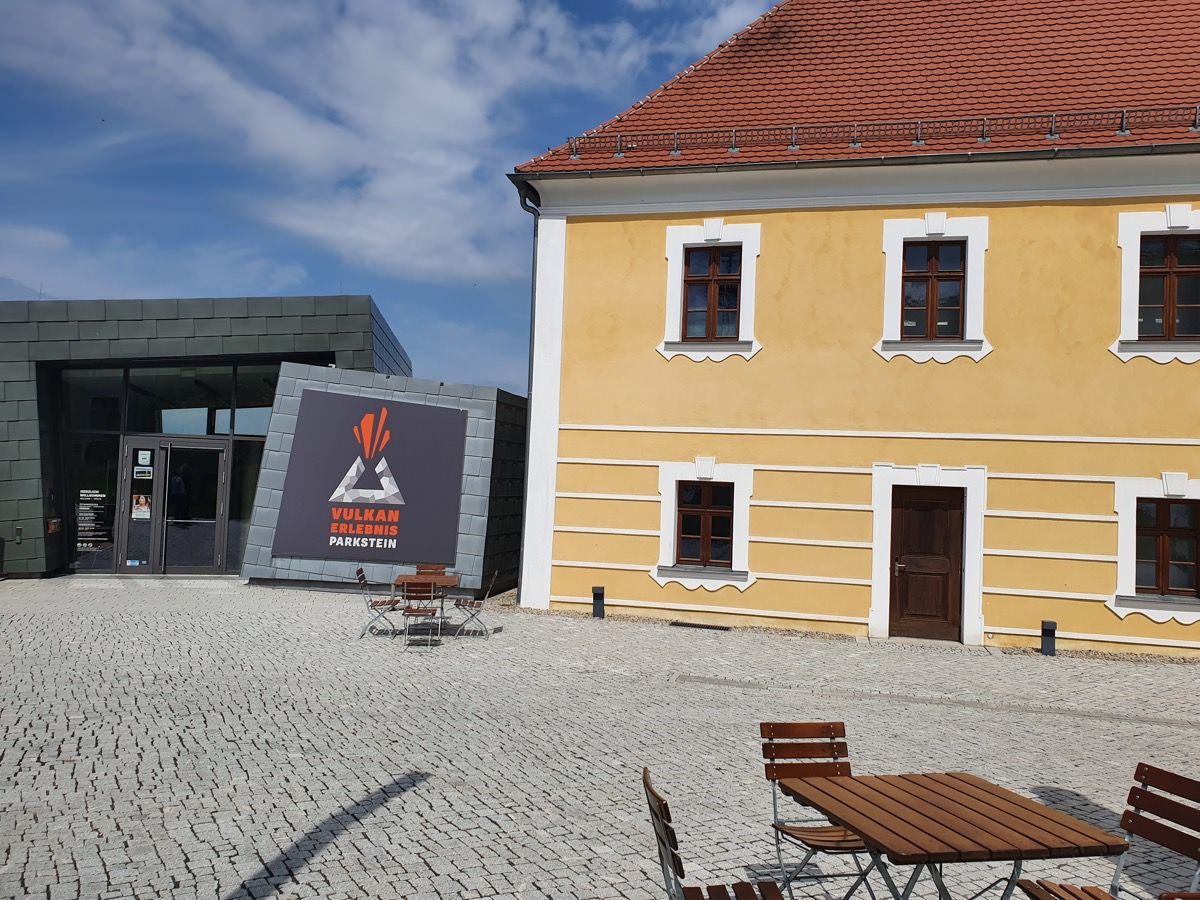
The content is conveyed in a clear and understandable manner, using short films and audio information, among other things. A "real" volcanic eruption with a column of light, smoke and loud thunder is particularly fascinating and exciting. An impressive demonstration that gives an idea of the elemental force of such an explosion.
Parkstein is also the headquarters of the non-profit association GEOPARK Bayern-Böhmen e. V. Its tasks include geotope protection and regional and cross-border development cooperation as well as geoscientific environmental education. In addition to the guided tours by the geo-rangers, interested parties are also offered "GEO tours", on which a topic is dealt with at each of eight to 15 locations in the geopark. Web apps are available for the GEOPARK routes and the GEO tours. These can be downloaded via the respective QR code on internet-capable smartphones.
For body and soul: Market & Cafe Parkstein
Filled with a wealth of information, for example about cooled magma that turned into basalt columns and eroded over the last 23 million years, some people with a thirst for knowledge may be on the lookout for a tranquil spot where they can at least have a bite to eat. The author of these lines, flattened by the abundance of exciting information, unexpectedly discovered a very special mixture of café, gallery and store in the village. With a great selection of cakes and an idyllic, lovingly designed garden in the courtyard.
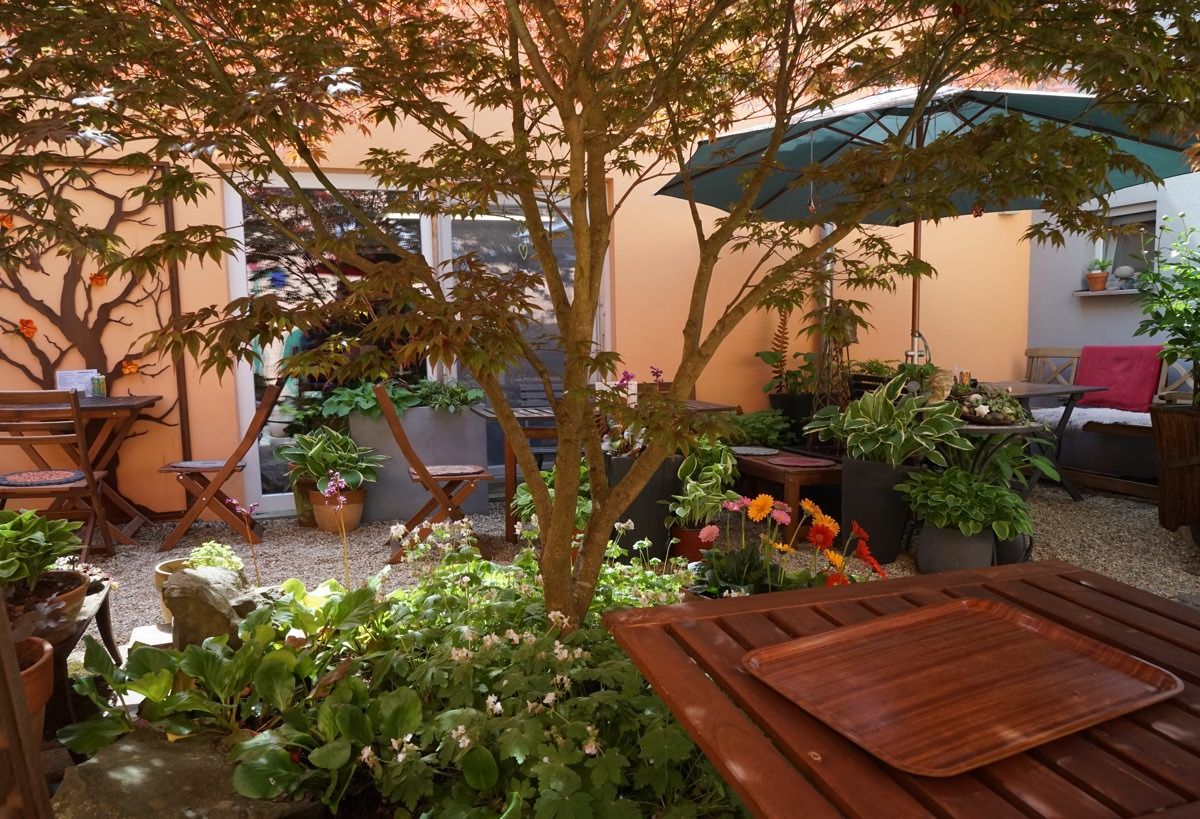
More information and tips on nature exploration, regional specialties and accommodations including contact addresses and links can be found on our "Steinwald Service Page."

Text: Peter Grett
Images:
Lead story: Siegfried Steinkohl
Image 1 Weissenstein castle ruin and Image 2 Pond pan: Upper Palatinate Forest – Thomas Kujat
Image 3 Orchid: Siegfried Steinkohl
Image 4 Fox lichen: Johannes Bradtka
Image 5 Arnika and Image 6 Dovetail: Siegfried Steinkohl
Image 7 Ural Owl: VLAB e.V. - Bernd Fischer
Image 8 Red high altitude cattle: Karl Scholler
Image 9 Basaltwand: Johannes Poschner
Image 10 Volcano experience Parkstein: Peter Grett
Image 11 Markt & Cafe Parkstein: Johannes Poschner

